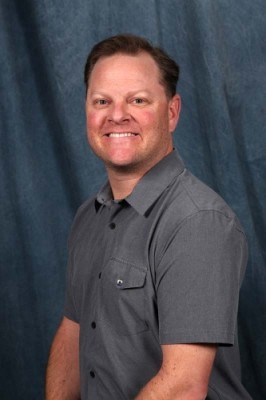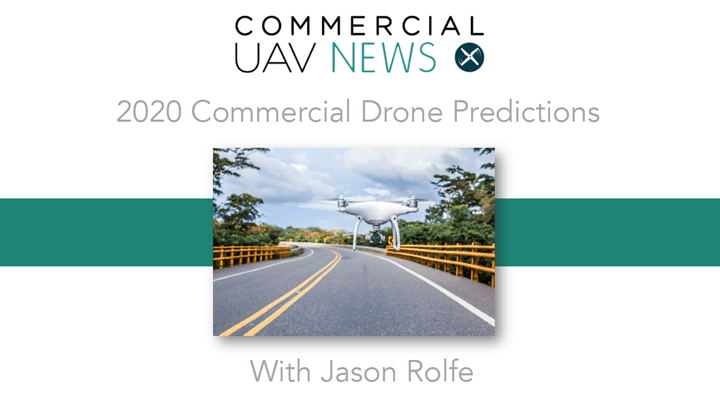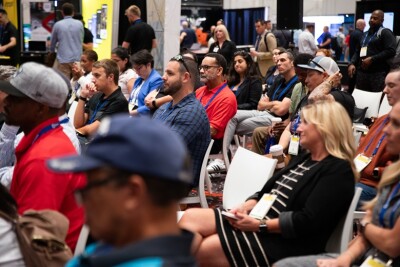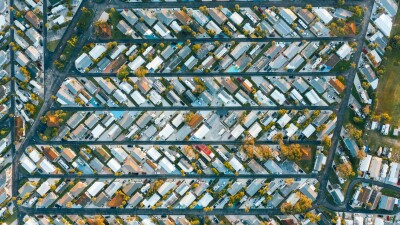The Nevada DOT has been an ideal testing ground for UAV implementation. With widespread support from the heads of the Nevada DOT and their team of qualified surveying professionals with manned and unmanned aircraft, they have been given the support needed to really test the capabilities of UAVs. Over the years, the program has really matured, moving away from experimental phase toward establishing well-tested workflows and processes.
We spoke with Jason Rolfe, UAS Pilot and Photogrammetrist, at Nevada’s Department of Transportation to get a boots-on-the-ground perspective on where DOTs are finding value in UAV implementation, what technologies will be leveraged in 2020, what challenges DOTs will be facing in 2020, and more.
Danielle Gagne: Between 2018 and 2019 we have seen significant growth of UAVs programs within state DOTs. As these UAV programs become more sophisticated how have expectations changed on utilization and how will these expectations change/grow in 2020 as states start to see their value in making certain tasks faster, safer, and cheaper?
 Jason Rolfe: I think one of the trends that we've seen from our partner agencies throughout the state is that a lot of them moved away from using drones. They were interested in drones in 2017-2018 but they didn't have a lot of success with it. Now, they are starting to see that the Nevada DOT has been very successful, and they are seeing some of the results that we're getting. I think they've gotten a renewed sense of trust in the system. Some of those that have moved away thinking it was more of a fad or novelty, have started to see that they allow for safer, faster, cheaper methods of data collection.
Jason Rolfe: I think one of the trends that we've seen from our partner agencies throughout the state is that a lot of them moved away from using drones. They were interested in drones in 2017-2018 but they didn't have a lot of success with it. Now, they are starting to see that the Nevada DOT has been very successful, and they are seeing some of the results that we're getting. I think they've gotten a renewed sense of trust in the system. Some of those that have moved away thinking it was more of a fad or novelty, have started to see that they allow for safer, faster, cheaper methods of data collection.
This comes not only from the precision mapping world, but also from other sectors as well. I think there is a desire to provide the public with data, such as videos and photos, of ongoing projects or of new assets that are being added to state agencies. I think that as we progress, we will see—and we are pushing this within our own DOT—that every section and division within state DOTs can benefit from using sUAS or drone technology in some way.
How has sharing video and photos of DOT assets and projects affected your relationship with the public? How do you think that relationship will change or grow in 2020?
I think that Nevada is actually probably a little more accepting of drone technology. Along with our strong military presence, we also have a lot of open and population-free areas. We're free to get out there and perform data collection and provide access for the general public to areas that are a little too remote for them to see or a little too far for them to travel to or come across in their daily commute. We've been able to be a lot more dynamic with providing video and media of assets to the general public through social media channels. As you know, a picture is worth 1,000 words, so getting out there and being able to give them timely updates from that aerial perspective has been beneficial to the space and will hopefully continue to strengthen that relationship with the general public.
How do you think UAVs will be leveraged in DOT surveying and mapping in 2020? Do you think that's going to change, grow, or move in any new directions with the technology that’s being developed?
You're seeing RTK and PPK enabled drones catching a lot of people's attention now that engineering and surveying tools are becoming more approachable for those without a strong surveying or programing background. The proliferation of RTK and PPK enabled drones, enables people to start exploring more precision-level surveying who might have shied away from it before.
This is a double-edged sword because it is very easy to get the wrong data and assume it is correct. A healthy amount of data validation still needs to be employed. People are starting to learn that good results can be achieved but they need to validate the data. The Nevada DOT will continue to work with the RTK and PPK drones we have been using for the past couple of years. We will also be looking into Lidar technology in 2020, and we’re very excited for that.
Lidar has become more available and slightly more affordable. With that we see some states with higher vegetation, who are already using photogrammetry, needing something more precise and accurate in those areas. Because Lidar is becoming a little more affordable, these states and agencies are looking at that technology.
All of these technologies allow us to be much more dynamic. Using our traditional program using a manned aircraft, if you were to request a project today, you might be able to get on the ground and survey that within six to eight months. Now with the use of UAVs, we can get results within 48 hours. Other agencies and departments are now starting to look at how quickly we are providing that data using a drone instead of manned aircraft.
What will be some of the biggest challenges DOTs will face with drone adoption in 2020?
I think it is still difficult to get accurate, precise, survey-grade data. If you’re not careful about how you are obtaining the data, it can still be tricky. Providing that high-quality data still requires a good amount of experience and skill. It is my hope that the DOTs that are starting to get into using drones understand this, and they develop their own individual workflows and vet their own processes to ensure that they get good data out the other end.
We’ve seen this in the private and public sectors that it only takes one or two bad products to set these programs back. The level of trust is slow to grow but it is really easy to break. I don’t think that a lot of state DOTs come from a photogrammetry and surveying background where everything is validated at each step, so it is easy to get missed. It might go into production before someone realizes or catches the mistake. So, as workflows get developed over months and years, it is important to keep checking the data at every step so that we can keep that level of trust in the data high.
The takeaway from this is that the technology is certainly there, we just need to make sure that we’re assessing the data correctly on the other end because the technology is not fool proof yet.
What are you looking forward to most in the space for 2020?
As I mentioned earlier, we’re very excited to start using Lidar technology in 2020. We’re looking at this technology not only for precision mapping but for volume comparisons and change detection over time. We’ve been using traditional photogrammetry for these processes but we are hoping to expedite the process and create some better data products, especially in vegetative areas.
I think that over the past several years we have been cobbling together different technologies and brute forcing them into a workflow that gave us the results we were looking for. Now we are looking to streamline our workflows and start to simplify a lot of the technology that we’re using.
We’ve been lucky in the support that we’ve received from our front office who’ve supported our drone program and it’s been successful. We’ve been able to try out some of the new technologies like smart targets, surveying devices like RTK and PPK drones, and so on. When you start putting all of this together you start to get lost in the forest, so now we are starting to back this out and simplify the way we are getting the data. We’ve been able to cull that technology back to what just is needed to get at the precise data.
The goal is to have data scientists behind our data collection. With the ability to set up automated missions, the drones, for the most part, fly themselves. What we really need in 2020 is strong data scientists behind the final end products who is versed in surveying, GIS, and geomatics to ensure that the data that is going out is accurate.
















Comments